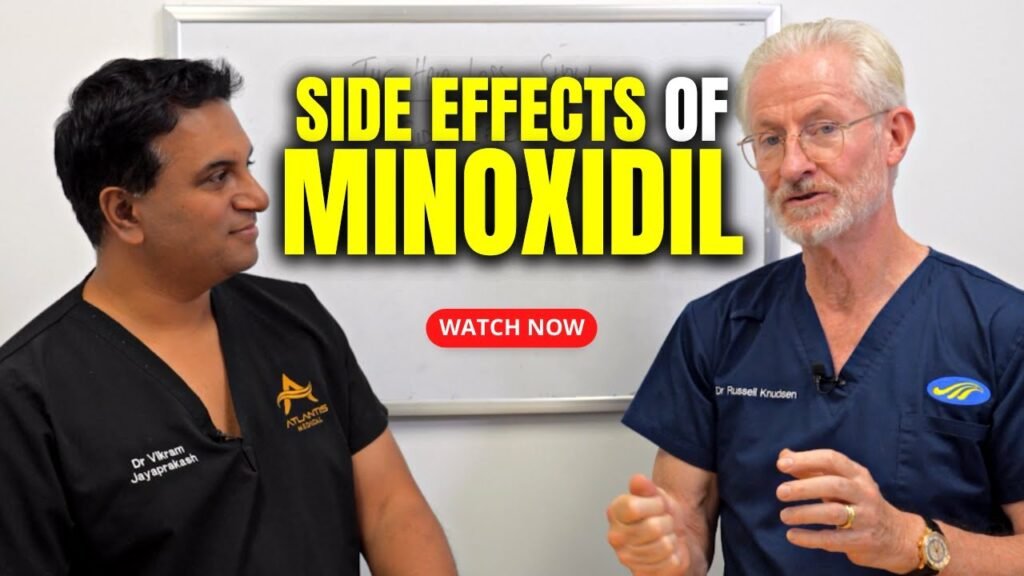Understanding Minoxidil: What It Is and How It Works
Minoxidil is a widely recognized topical medication primarily used to treat hair loss. Initially developed as an oral medication for high blood pressure, its unexpected side effect of hair growth led to the creation of topical formulations specifically for combating hair thinning and baldness. Minoxidil is available in various strengths, most commonly 2% and 5%, and is typically applied directly to the scalp. It is approved by the FDA for use in both men and women, making it a popular choice for those experiencing androgenetic alopecia, commonly known as male or female pattern baldness.
How Minoxidil Works
The exact mechanism by which minoxidil promotes hair growth is not fully understood, but it is believed to work by partially enlarging hair follicles and extending the growth phase of hair. This process allows for more follicles to produce hair at any given time, resulting in a fuller appearance. Minoxidil is thought to open potassium channels, which may help improve blood flow to the hair follicles. This enhanced circulation could potentially stimulate follicle function and hair growth. Users typically need to apply minoxidil consistently, as discontinuation can lead to a reversal of its effects and subsequent hair loss.
Application and Usage
When using minoxidil, its important to follow the recommended application instructions to achieve the best results. The product is generally applied to dry scalp areas twice daily. Users should ensure that their scalp is clean before application and should avoid shampooing their hair for at least four hours after applying minoxidil to allow adequate absorption. While some people may begin to notice hair regrowth within a few months, it often takes several months of consistent use to see significant results. Its worth noting that while minoxidil can be effective for many, it may not work for everyone, and results can vary based on individual conditions and the extent of hair loss.
Common Side Effects of Minoxidil in Males and Females
Minoxidil is a popular topical treatment used to promote hair growth and manage hair loss in both males and females. While effective for many, its important to be aware of the common side effects that may accompany its use. One of the most frequently reported side effects is scalp irritation, which can manifest as itching, redness, or a burning sensation. This reaction is often due to the alcohol or propylene glycol in the formulation, which helps in the absorption of the medication. Users experiencing significant discomfort should consult with a healthcare professional to explore alternative formulations or concentrations.
Another common side effect of minoxidil is unwanted facial or body hair growth, a condition known as hypertrichosis. This occurs more frequently in females than males and is typically reversible upon discontinuation of the treatment. The hair growth is usually more noticeable on areas such as the cheeks, forehead, or upper lip. To mitigate this side effect, users should ensure that the application is restricted to the scalp and any accidental spread to other areas is promptly cleaned.
Additional Considerations for Minoxidil Users
Some individuals may experience temporary hair shedding during the initial phases of treatment. This shedding is often a sign that the product is working, as it is part of the process where older hairs are making way for new growth. Although alarming, this phase typically subsides after a few weeks. However, if excessive shedding persists, its advisable to seek medical guidance to rule out other underlying conditions.
Other less common side effects can include dizziness, headaches, or a rapid heartbeat, though these are generally associated with oral minoxidil rather than the topical form. Its crucial for users to adhere to the recommended dosage and application instructions to minimize the risk of systemic absorption and related side effects. For individuals with pre-existing conditions or those on other medications, consulting with a healthcare provider before starting minoxidil is highly recommended.
When to Stop Using Minoxidil: Signs You Shouldnt Ignore
Understanding when to stop using minoxidil is crucial for maintaining both your hair health and overall well-being. While minoxidil is widely used for its effectiveness in treating hair loss, its important to recognize the signs that indicate it may no longer be suitable for you. One significant sign to watch for is the development of severe scalp irritation or persistent redness. If you experience these symptoms, it could be an indication that your skin is reacting negatively to the treatment, and continued use may exacerbate the problem.
Another critical sign that you should not ignore is the occurrence of unwanted facial hair growth. While minoxidil can be effective for scalp hair regrowth, it may also stimulate hair growth in other areas. If you notice excessive facial hair growth, especially in women, it might be a sign to reconsider the usage of minoxidil. Additionally, if you experience dizziness, rapid heartbeat, or unexplained weight gain, these could be signs of an adverse reaction to minoxidil, and its advisable to consult a healthcare professional immediately.
Lastly, if you notice that your hair loss worsens or if there is no improvement after several months of consistent use, it might be time to stop using minoxidil. While some initial shedding is normal, prolonged or increased hair loss could indicate that minoxidil is not effective for you. In such cases, discussing alternative treatments with a healthcare provider can help you find a more suitable solution for your hair loss concerns. Recognizing these signs and acting promptly can prevent further complications and help you make informed decisions about your hair care regimen.
Alternatives to Minoxidil: Exploring Other Hair Loss Solutions
For those seeking alternatives to Minoxidil, there are numerous other hair loss solutions that may better suit individual needs and preferences. Finasteride, for instance, is a popular oral medication that works by reducing levels of dihydrotestosterone (DHT), a hormone linked to hair loss. Unlike Minoxidil, which is applied topically, Finasteride is taken orally and is particularly effective for male pattern baldness. However, it’s important to consult with a healthcare provider, as Finasteride may have side effects such as decreased libido and other hormonal changes.
Natural Remedies and Supplements
For individuals interested in more natural approaches, a variety of herbal supplements and essential oils have shown promise in promoting hair health. Saw Palmetto, for example, is a supplement that may help block DHT and is often included in natural hair loss treatments. Essential oils such as rosemary and peppermint oil are also touted for their potential to stimulate hair growth when massaged into the scalp. Additionally, maintaining a balanced diet rich in vitamins and minerals like biotin, zinc, and iron can support overall hair health and potentially slow hair loss.
Non-Medical Treatments
Beyond medications and supplements, several non-medical treatments are available for those exploring alternatives to Minoxidil. Low-Level Laser Therapy (LLLT) is a non-invasive treatment that uses laser light to stimulate hair follicles and promote growth. It can be administered through devices like laser combs or caps and has been shown to be effective for some individuals. Another option is Platelet-Rich Plasma (PRP) therapy, a procedure that involves injecting concentrated platelets from the patients own blood into the scalp to encourage hair growth. Both LLLT and PRP offer promising results, though they may require repeated sessions and can be more costly than topical treatments.
Consulting a Healthcare Professional: Making the Right Decision
Deciding when to consult a healthcare professional can significantly impact your health and well-being. Recognizing the signs that necessitate expert advice is crucial for timely intervention and effective treatment. Whether youre experiencing persistent symptoms, managing a chronic condition, or simply seeking preventive care, understanding when to seek professional guidance can make a significant difference. Ignoring symptoms or delaying consultation can often lead to more severe health issues, underscoring the importance of making informed decisions about your healthcare needs.
Identifying the Right Healthcare Professional
Choosing the appropriate healthcare professional involves understanding the specific expertise required for your condition. For general health concerns, a primary care physician can provide comprehensive care and guide you on the next steps. For specialized issues, such as cardiovascular health or skin conditions, consulting a specialist like a cardiologist or dermatologist may be necessary. Its essential to consider factors such as the healthcare professionals qualifications, experience, and patient reviews. Researching their background and seeking recommendations can help ensure you make an informed choice, leading to better health outcomes.
Preparing for Your Consultation
To maximize the benefits of your consultation, its important to come prepared. Start by listing your symptoms and noting any relevant medical history, including medications youre currently taking. This information will help the healthcare professional diagnose your condition accurately and develop an effective treatment plan. Preparing questions in advance can also help you gain a deeper understanding of your health status and the recommended course of action. Being proactive in your healthcare journey empowers you to make well-informed decisions, fostering a collaborative relationship with your healthcare provider.


